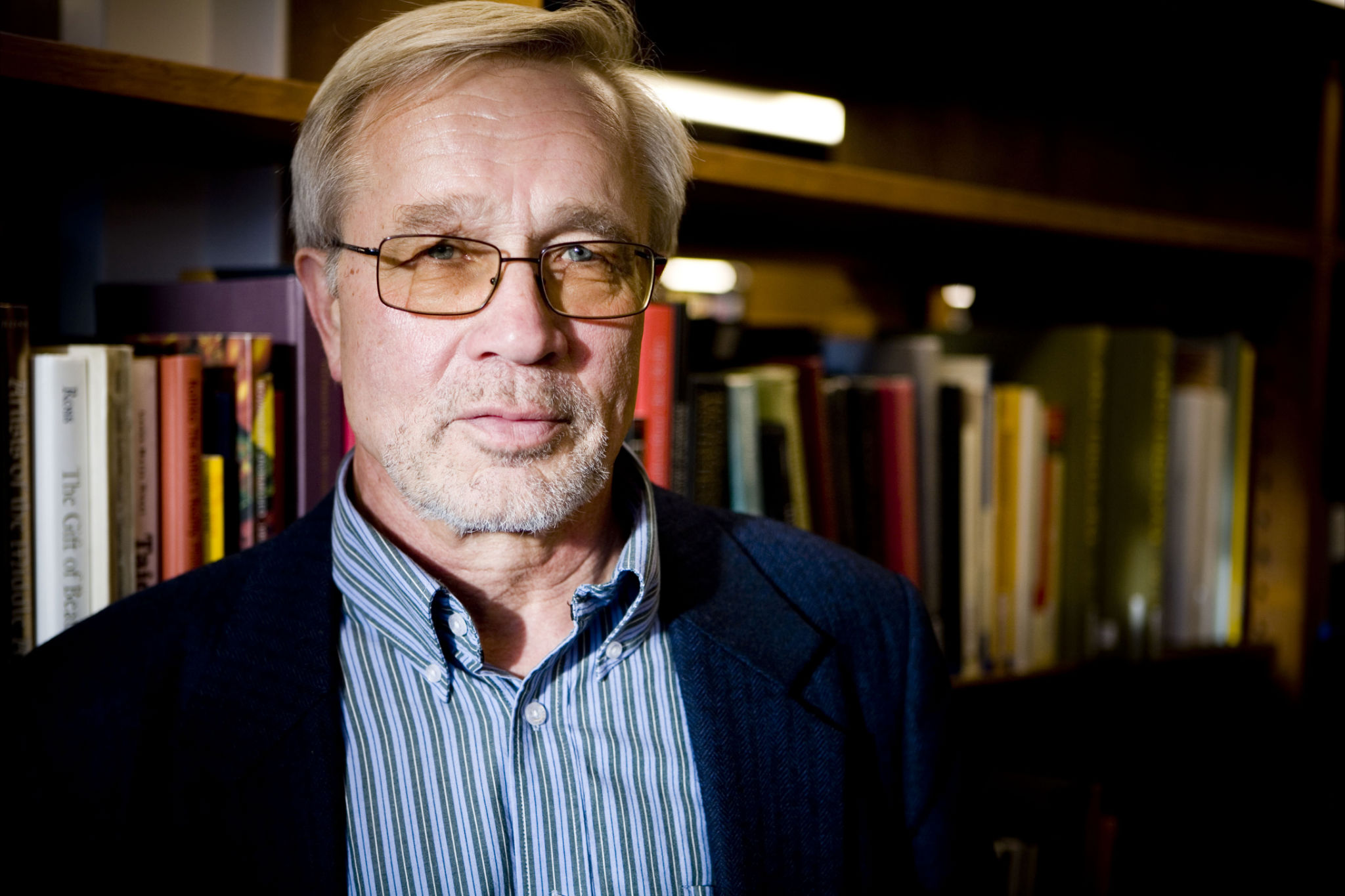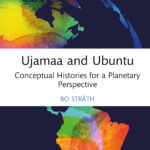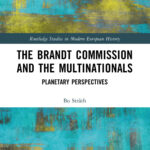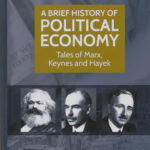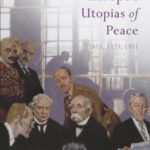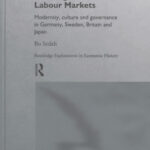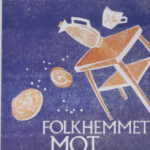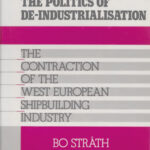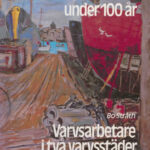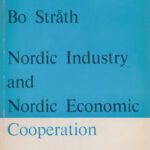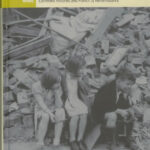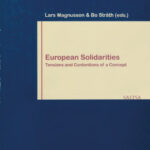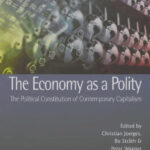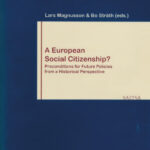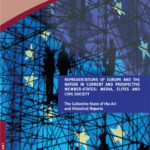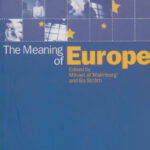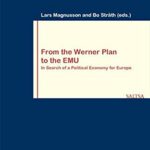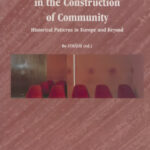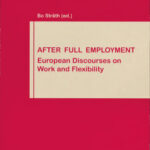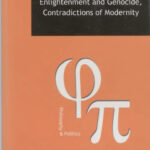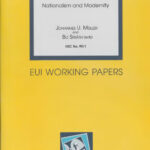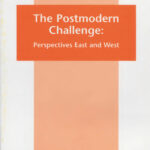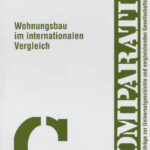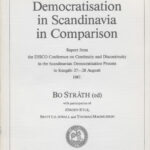The Value of Energy. Conversations with James Quilligan

BS James, in your article Who Will Pay Back the Earth, you talk about an “energy quest myth” behind human societies and communities’ long pursuit of energy. Early on, humans learned to generate surplus energy by continuously finding new energy reserves, leading to the belief that Earth’s energy resources were endless. Families and communities could go beyond their local places to find fresh energy sources. This practice accelerated with the industrial revolution, which, in the end, through its incessant desire for new and greater sources of energy, connected the local places with the whole planet. The limits of what was possible were constantly being pushed. The credo was material energy growth. There were, of course, observations of uneven distribution of the yields of growth and exhaustion of resources, as well as the exploitation of labor and nature. However, few saw the long-term and structural implications. You refer to Joseph Fourier, who, in the 1820s, described how heat accumulated in the atmosphere. In retrospect, his observation was the beginning of the greenhouse theory. Another consequence of growth, which was thought of only much later, was that as the rate of exploitation accelerated, it provided the material conditions for the exponential growth of the world’s population, which became a long-term problem when the insight grew that the resources were scarce.
These two interacting dynamics – resources and population ‒ eventually reached a point where this development couldn’t be silenced any longer. A strong argument emerged that what was thought to be limitless had limits, after all. The Club of Rome warned of these boundaries in its 1972 report, Limits to Growth, yet after a brief pause of dismay and reflection, the trend of infinite production continued. You recall the projections of the Rome Club when you argue for a regenerative plan for planet resource management, especially since world resources began decreasing and pollution increasing just as the Limits report was published, and the world’s natural resources, food, and industrial output are now declining at the same time, as predicted.
Your argument about this debate seems to be that our way of measuring values through price-setting in a market, and our monetary circulation, with an obvious speculative dimension, circumvents the whole problem of value in terms of resilience and regenerative capacity. Under the motto of economic growth measured in money value depending on demand and supply, the planetary existential condition of cultivating and farming without overconsumption disappeared.
JQ Yes, and it’s no coincidence United States President Richard Nixon had made several domestic and international monetary adjustments the year before the Rome club report, which ended the Bretton Woods monetary system, including the guaranteed convertibility of the US dollar to gold. After World War II, the US had emerged as the world’s monetary hegemon with more than 1/3 of the world’s gold; but public debt from the 1960s Vietnam War and a balance of payments deficit led European nations to demand redemption of US dollars for gold. US officials believed they were curbing monetary inflation by closing the gold window in 1971 and deregulating the international monetary from fixed exchange rates to floating exchange rates two years later. But as neoclassical economists, they did not fully understand the thermodynamic factors that were underlying their projections for supply and demand: Earth’s capacity for biological regeneration had begun falling into deficit with the increasing demand of individuals, businesses and governments for energy resources. As a result of the policy decisions in the early 1970s that encouraged monetary deregulation, easy credit and unfettered financial flows, our planet is now using nearly two planets’ worth of resources to support itself. This is what ecologists and complex systems analysts refer to as earth overshoot, the massive borrowing and ecological debt that has increased steadily for the past five decades.
BS This development became possible because ecology was not accounted for in global economic or political policy during the 1970s. However, in the wake of Limits to Growth, sensitivity to this gap emerged. For example, although only rudimentary, the 1980 Brandt Commission report, North-South: A Programme for Survival paid attention to the issue. Later in the 1980s, Gro Harlem Brundtland’s World Commission on Environment and Development launched the idea of sustainability in its landmark report, Our Common Future (1987). The integration of ecology and economics then became a key issue in the global policy debate and has remained central. Brundtland’s innovation was the branding of sustainability, which soon became a key concept in the rapidly growing discussion on the world’s resources and environment and has remained so ever since. My question is, if ‘sustainability’ is a plan to balance resource consumption and renewal, as Brundtland proposed, how is the term ‘regenerative’, which you seem to prefer, any different?
JQ Sustainability and regeneration are often regarded as synonyms. But the innocuous word ‘sustainability’ has been co-opted in several ways since the 1980s and 90s. Businesses have developed a latter-day commitment to ecology through the ‘greenwashing’ of nature, which is arguably a marketing strategy to boost sales with environmentally conscious consumers. In addition, industry standards for Corporate Social Responsibility (CSR) and Environment, Society and Governance (ESG), which were intended as best practices for corporate self-regulation, are comprised of a myriad of indicators that create vastly different guidelines for different companies. This has led to the cherry-picking of measures and self-serving standards in the production and distribution of products. On a more strategic level, the interpretations of sustainability as ‘natural asset value’ and ‘natural capital’ are deeply misleading in epistemological terms. They legitimize the idea that the world’s ecological commons are ‘ecosystem services’, allowing them to be turned into legal property rights, which can be readily commodified and securitized by developers, thereby transforming the raw materials of nature into fungible products for the marketplace.
BS Yes, indeed, the issue at stake for Brundtland was how to connect energy and the environment to the market system, and here we see the beginning of what became trade in certificates of carbon emissions, which went adrift into what might be described as a modern form of ‘trade indulgences’ under the label of biospheric subsidiarity. Brundtland’s branding of sustainability and sustainable environment was the political cornerstone of Our Common Future. The concept might have gained widespread success by appealing to the pluralism of mutual interests between the public political sphere and global corporations. But the multinationals found openings and opportunities to bend the term to their advantage. In hindsight, Brundtland’s branding opened a new competition around the commercial meaning of sustainability, which twisted Brundtland’s original intention. Neo-liberal market ideas had already gained hegemonic power by the time the report was presented. So, rather than clashing with them directly, the report circumvented the core economic issues. Although the Brundtland Report emphasised that the North’s patterns of consumption had to change and that it would be necessary to adopt lifestyles compatible with the planet’s ecology, it went no further than saying that sustainable development required painful choices. As a critical commentary on the report argues, Brundtland’s “radicalism was muted and bent to the will of the dominant pro-growth discourse.” So, the principle of sustainability became part of mainstream discourse through the cost adjustment to “business as usual” conditions. The state of exception and emergency that the report emphasised simply disappeared by normalizing free market and free trade practices around the visionary term ‘sustainability’. Another critic argued that global sustainability became the bandage for the global development problem and had little to do with the environment. By redefining the Brundtland idea of ecological subsidiarity to explain that economics could solve the problem of carbon emissions, influential interpreters of the Brundtland report blurred the line between sustainable development and sustainable economic growth. Instead of measuring nature’s energy-value in your sense, James, sustainability drifted off into human-centered utilitarianism.
JQ That’s a very fine summary. It’s another reason why the word ‘regenerative’ is recognised as a more dynamic framework than sustainability The meaning of regenerative is more accountable, requiring that the materials and energy of nature are held to the standard of self-reproduction, rather than just their conservation or preservation through stewardship, which refers to the class of ecological processes that are protected to last until they dissipate. Hence, sustaining something is usually more passive than regenerative, although there are signs that regeneration, like sustainability, may become another brand rather than a trustworthy paradigm.
For example, I’ve recently been seeing the brand ‘Regenerative Eggs’ at my local grocery store and decided to buy a carton last week, impressed that they are produced through regenerative agriculture. But on my way home, I gritted my teeth to realize how ambiguous this is, since these eggs will never reproduce themselves no matter how long I conserve or preserve them in my refrigerator. I’m grateful that a healthy hen hatched these eggs for me to eat, but it’s sad to think that she was prevented from giving birth to new chicks. My point is that the idea of regeneration is not just to prolong a lifespan sustainably in the present, but to maintain the energy of renewable and non-renewable resources far into the future. Besides the difference in the meaning and use of the terms sustainable and regenerative, they also reflect the period in which they became popular. ‘Sustainable’ represents the 1980s school of ecological economics, while ‘regenerative’ emerged from the field of biophysical economics that has developed since the 2000s.
BS I like the idea of a reconceptualisation because self-organising societies and linguistic communities must be aware that we are in continuous epistemological contention about how to describe the world. We must be careful to keep the regeneration in the sense you give it. We need a conceptual framework that underscores how natural resources are limited, as the Brundtland Commission emphasized, before the laissez-faire/utilitarian debate played down this meaning and subjugated sustainability to the fiction of the market. Resources, such as water and air, were argued long ago to be endless. Nowadays, it should be standard knowledge that they aren’t. Since our resources are limited, there must be some mechanism to measure their potential for renewal or regeneration before their decline, exhaustion and collapse. How do we know at a global scale where and when consumption exceeds renewal? Or is this something that should be determined at local and regional levels?
JQ I think both methods are essential. First, we have to change the way that energy and matter are measured, which is what the Brundtland Commission was unable to do: transform the neoliberal model by applying planetary boundaries and illuminating the shocking contradictions between the two worldviews of finite and infinite resources. Identifying these limits, several of which have already been exceeded, is intended to define a safe scope for the economic activities and well-being of humanity and all living creatures. In April 2022, for example, a reassessment indicated that the capacity of freshwater on the planet to meet the needs of the global population had been breached. The concept of specific planetary boundaries was originally developed by a group of earth system and environmental scientists led by Johan Rockström and published in the report Planetary Boundaries in 2009. Planetary boundaries are being used to define goals for international climate policy, for example, through a two-degree climate temperature guideline to prevent the collapse of civilization. In an update 2023, authors the group quantified all boundaries and concluded that six of the nine boundaries had been transgressed. It expanded the criteria of planetary boundaries to encompass cross-species, generational and climate justice.
Given the dynamic context of planetary boundaries, isn’t it odd that the same economic standards still measure organic and inorganic resources? Why are these different sources of energy computed by their market price as consumer products, implying that biological and physical materials are somehow related? It’s because the cost of products typically represents their quantitative production costs, leaving out the actual value of the qualitative potentials of matter and energy that they represent, whether inert or living.
Societies have been very slow in applying this realization, but it’s become possible to measure both biological and physical forms within an ecosystem by establishing the ratio that exists between them using the metric of carrying capacity. This is a term closely related to regenerative energy and the empirical calibrations of planetary boundaries. Carrying capacity indicates the relative limits and abundance of a resource of a region in terms of the population that lives there. This is a far more accurate indicator of a product than its marginal utility, which exists only in people’s subjective preferences. Instead of calculating value by the price of things in terms of an individual’s demand, it’s possible now to determine the dynamic value of energy and matter according to its throughput within an ecosystem — the vital chain between its supply of resources and the needs of the people or species that exist within that ecosystem.
Now, back to your question about the scale of this measurement. For practical purposes, the overshoot or undershoot of natural limits must be measured at the level of both the planetary biosphere and the local or regional ecosystem. These measures can be made independently; but the information will be much more accurate when the planetary and regional levels are working in closer coordination. These differences in scale and scope are what macroeconomics and microeconomics have not been able to bridge through the neo-classical economics of supply chains, comparative advantages and trade deficits, but as the field of biophysical economics develops this new computation may become much easier and more direct. New breakthroughs in the field of carrying capacity are happening every day.
BS As we deal with scarce resources, you maintain that their extraction rates have exceeded their renewal rates since 1971. This raises questions about how they will be distributed. Don’t they need a value for making accurate and meaningful decisions about their allocation? What is this value and how do we measure it? In our present economic system of supply and demand, money is the gauge that measures energy and other resources, and those with more money have a more significant influence over their distribution.
JQ Yes, redistribution is the major problem on the demand side. But let’s examine the supply side first, to illustrate why the price of something is not the same as its value. The measures of energy stocks and flow have been behind the value of money since the earliest days of agricultural civilization, although this is rarely expressed directly in terms of energy. Think of this measure, not as a price or a unit of money, but as an energy-value. For example, most people who drive cars with a combustible engine can instantly tell you the current price of a liter of petrol because it’s posted on every pump. But they know precious little about the amount of joules of sunlight embodied within the fossil fuel that propels their cars down the highway, which is the actual value of energy. A monetary system will eventually be developed that measures this value according to the maximum sustainable yield of all forms of energy, not only fossil fuel. Take a look at Table 1 in my article, the chart called Varieties of Energy Sources in the Holocene Age. You can see the various forms of energy that can be measured as embodied sunlight that, when accessed, provide energy for people’s physiological and household needs. This energy scale is being adapted now to reflect the inputs of these energy sources for a new monetary system; and the outputs are measured by the needs, well-being and purchasing capacity of the people who use this energy.
A biophysical monetary system must be developed by matching resource yield with human need. Establishing a currency based on regenerative value will ensure that the fractional reserve system of central banks is transformed and that wealth accumulation in society is capped. In turn, the provisioning of resources will no longer be decided on a discretionary basis through the price system of marginal utility, effective demand, trickle-down economics or social welfare. Both supply and demand will become regenerative: on the supply-side is the regenerative yield of an energy resource, like food, that is derived from the soil through embodied sunlight; and on the demand-side are the regenerative physiological and consumptive needs of human beings, like hunger, which may be measured through the energy-value of purchasing capacity. Thus, supply and demand are now represented as the funds and flows of energy-value through what we call a ‘supply chain’, which is a crude measure of the throughput of thermodynamic forces in society.
BS In this new biophysical monetary system, what are the units? The gauge? Since you talk about the supply and demand of regenerative energy resources, I assume you envisage a market mechanism regulating this demand and supply? Resources must somehow be exchanged, and we are not returning to barter trade. Trade remains the pivot of the exchange of energy and resources. But money as we understand the term today is no longer the gauge? Instead, you buy and sell joules, so the joule becomes the new money?
JQ The joule will be the unit of measure, but the actual form of money could take many forms. Money is likely to be digital at the planetary scale, but its form may vary from region to region, especially in remote areas. Once carrying capacity has determined the amount of resources in an ecoregion that would meet the needs of the people within that region, this figure will be used to establish the regenerative value of its energy currency. Its value would be adjusted in real-time, assuring public and private confidence in the accuracy and stability of their currency. The big difference from today’s market-based system is this: instead of the price signals coming from the petrol pump to you, the regenerative value of your currency itself will directly inform your decision on how much petrol it is wise to purchase at the moment. Your choice will be more regenerative than utilitarian.
BS Classical and neo-classical economics have evaded the connection between economic growth and distribution of scarce resources issue for a long while. It was expected that further technological inventions might enable more significant economic growth and redistribution of resources. Against the backdrop of the systemic poverty and income cleavages that remain on the planet, how will these be addressed if there is no growth and redistribution of wealth?
JQ During the past two centuries, humanity has experienced extraordinary levels of economic growth. Energy-driven production led to the development of both innovative technologies and liberal governments that worked to support and maintain these high levels of growth. But despite its wondrous benefits, the age of fossil fuels, industrialism and neoliberalism has blinded civilization to the root causes of this prosperity. Greater efficiency in technology and production has not led to less but greater consumption, especially by the wealthy.
We are now realising that technology has led societies into two existential traps. The first is the violation of the planetary limits to growth, including the industrial production of carbon dioxide waste, which has resulted in climate change. The second is that governmental policies encouraging expansionist trade have been unable to reallocate resources effectively. This internal contradiction is made clear by comparing the fabulous economic wealth of America and China with the extreme levels of poverty and income disparity that have resulted, both at home and abroad. The existence of three billion poor people and the overshoot of the world’s resources are interrelated: the wealthy have taken their relative economic wealth for granted. It’s obvious now that in a degrowth, post-growth or post-neoliberal world, an entirely new system will be required to generate abundance and well-being without exponential economic growth. When the global economy unwinds, I think you will see an extraordinary increase in mutual aid, where people adopt the ethic and practice of greater cooperation in the distribution of resources. I expect this will evolve into a new type of economics.
BS Biophysical economics is the umbrella concept around regenerative energy and carrying capacity. It indicates how much has changed since Brundtland branded the sustainability concept in an attempt to appeal to reason, responsibility, and interests to maintain the then-prevailing economic system of neo-liberalism by reforming it. A little bit more than one generation later, the problem has become far more serious, requiring a more radical reconceptualisation. In our next blog, let’s continue by discussing how to measure the production and consumption of energy and its trade, returning to the monetary system that we touched upon at the beginning of our conversation.
How to quote:
Cit. James Quilligan and Bo Stråth, ““The Value of Energy. Conversations between Bo Stråth and Jamese Quilligan. 1. Is Growth Possible?” Blog. https://www.bostrath.com/planetary-perspectives/the-value-of-energy-conversations-with-james-quilligan-1-is-growth-possible/ Published 03.01.2025
